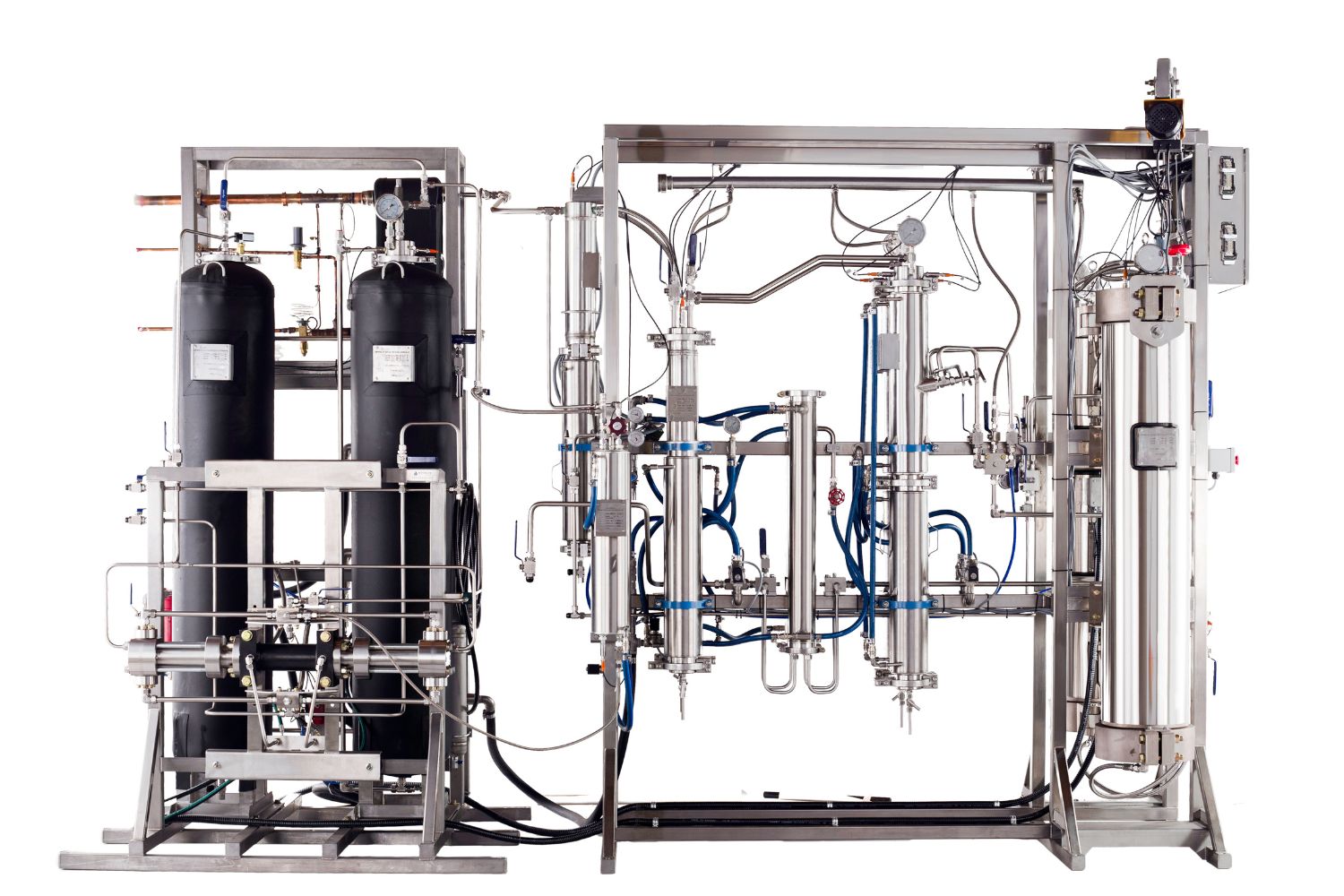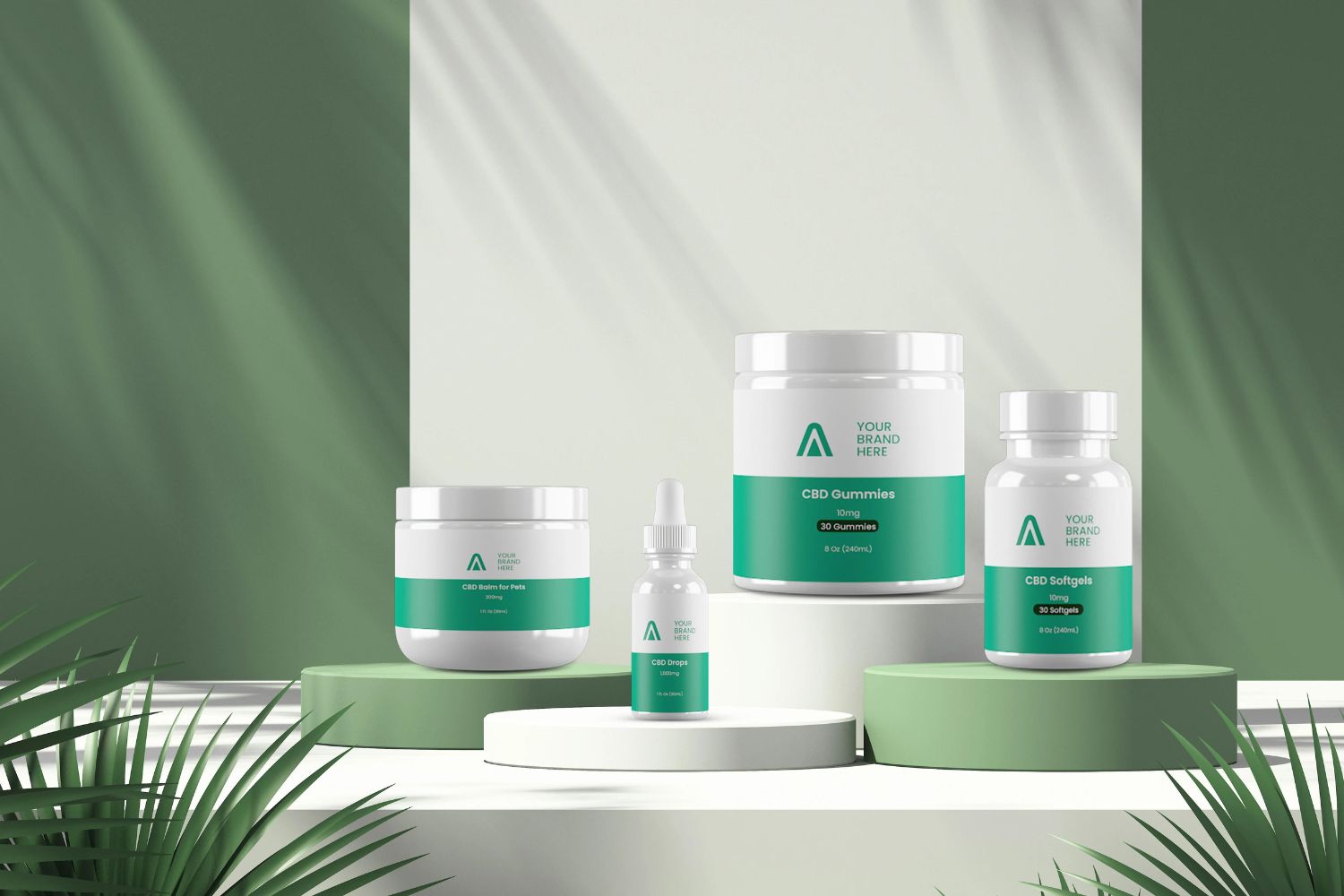Of the over 100 known cannabinoids, THC and CBD are household names - but this leaves a huge number of related compounds that receive comparatively little attention. Unfortunately, a strong focus on THC and CBD meant cannabinoids like CBT went largely unnoticed.
However, research expanded over the years, uncovering new benefits of cannabinoids beyond THC and CBD. Despite being relatively unexplored, CBT still received some attention and is slowly popping up among select vendors.
So what is CBT? What are the benefits - if any? Is it safe? Let’s answer these questions and see how CBT might be a useful up-and-coming addition to your wellness routine.
What is the Cannabinoid CBT?
First discovered in 1966, cannabitriol (CBT) is a rare minor cannabinoid found in select cultivars of the cannabis sativa L. plant species. But since it’s most common in high CBD strains, one of the best sources is the variant referred to as “industrial hemp.”
CBT’s molecular profile - expressed as C21H30O4 - is almost identical to that of CBD and THC (C21H30O2). The only deviations are two additional oxygen atoms and a different cannabinoid structure . Like all cannabinoids, though, this minor change makes a major difference - more on that later.
A major obstacle is availability. CBT is so elusive that very few cultivars (“strains”) contain the compound, while strains that carry it have very little. Consequently, getting samples for research is challenging.
Nonetheless, some scientific analysis of CBT exists as minor cannabinoids gradually catch the interests of scientists and health enthusiasts alike.
Cannabitriol exists in small traces among high-CBD strains, but it can also be generated inside us when THC is processed in our bodies. Following THC consumption, cannabitriol is the by-product of an oxidation process, leaving CBT behind (Brogan et al., 2007).
Types of CBT
Cannabitriol - like THC - isn’t isolated to a single structure. Instead, the rare compound is broken into nine CBT-based cannabinoids.
A 2021 review of existing literature in Molecules mentions nine in total, but the most common one is cannabicitran, or CBT-C. Like THC, CBT cannabinoids are separated based on minor structural differences.
Since CBT-C is the most prominent of all CBTs, the term is often used interchangeably with “CBT.” This is why some sources may refer to CBT as “cannabicitran.”
The correct scientific term for CBT is “cannabitriol,” while “cannabicitran” is CBT-C.
How Does Cannabitriol (CBT) Work in the Human Body?
How cannabitriol (CBT) works in the human body isn’t fully understood. However, a 2022 study examined the effects of several major and minor cannabinoids on the endocannabinoid receptors (including CBT).
Cannabinoids with a solid affinity for the CB1 group trigger strong psychotropic effects, while those that bind to CB2 won’t be intoxicating.
So far, THC is the only cannabinoid that binds strongly enough with CB1 pathways to cause notable intoxication. However, some bind more weakly or alter the CB1 receptors.
The testing methods showed almost no interaction between CBT and the CB1 receptors, which explains why they’re non-intoxicating.
Unfortunately, CBT’s effects on the CB2 receptors and other pathways remain unknown.
But if CBT doesn’t bind to the CB1 receptors, it’s possible that CB2 may be a different story.
On the other hand, CBT might not directly activate the endocannabinoid system, working through other receptor pathways. This mechanism isn’t unique. CBD works the same way, with no affinity for CB1 or CB2.
Without more research, we won’t know precisely how cannabitriol works in the human body.
Effects of CBT
We don’t know much about CBT’s effects. The aforementioned 2007 study by Brogan et al. suggests that CBT-C may help mitigate THC intoxication, much like CBD. According to the authors, CBT-C asks as a sort of “antidote,” inhibiting the chemical process necessary to trigger a high.
This finding isn’t a surprise since CBT (in all forms) doesn’t bind to the CB1 endocannabinoid receptors, it’s impossible for the cannabinoid to have psychotropic effects.
Considering the above, it’s unlikely CBT has overt effects like THC. However, no human trials exist on how pure CBT affects humans.
What are the Benefits of CBT?
CBT is still obscure, with little research on its general therapeutic uses (if any). Consequently, nobody knows what CBT’s potential day-to-day benefits could be.
Fortunately, we’re not entirely in the dark. Some research suggests cannabitriol might have crucial therapeutic applications in two critical areas.
CBT May Fight Breast Cancer
As one of the most common cancers in women (and to a much lesser extent in men), breast cancer needs little introduction. According to the CDC, 264,000 women and 2400 men develop breast cancer every year. Of those individuals, 42,000 women and 500 men die from the disease.
A lot of research into cancer and cannabinoid medicine exists, with just one study (so far) addressing the topic. Research from 2020 suggests CBT is an estrogen receptor antagonist, meaning it inhibits the activity or effects of that hormone. This discovery is promising because this mechanism of action can help prevent breast cancer.
Another study from 2021 is even more compelling. Researchers compared CBT’s breast cancer inhibition to conventional pharmaceutical treatment. The results suggested that cannabitriol was more effective than Tamoxifen, a pharmaceutical drug that - like CBT - works as an estrogen receptor antagonist.
It’s rare to see cannabinoids outperform their FDA-approved counterparts, which makes this discovery unbelievably promising.
Glaucoma Treatment
A 1984 study by Elsohly et al. concluded that cannabitriol helped reduce symptoms of glaucoma in rabbits.
The data of this research also shows that CBT has been on the scientific radar for quite some time. While no follow-up human studies exist (as of the writing of this article), cannabitriol’s anti-glaucoma effects on animal subjects indicate cannabitriol could be an effective vasodilator.
The vasodilatory effects may also be helpful for high blood pressure. However, this is our own inference and isn’t backed by any scientific studies.
CBD vs. CBT
Since we know so little about CBT, there aren’t many similarities or differences to cite. Based on research so far, we can make a few inferences.
Similarities
- Non-intoxicating
- Reduces the effects of THC
- No affinity for CB1 receptors (CBT’s effects on CB2 are unknown)
- Highest concentrations are in cannabis chemotype III (industrial hemp) and other high-CBD variants
- Possible anti-cancer benefits
Differences
- Molecular composition and structure (CBT contains two additional oxygen atoms)
- It can be a by-product of THC breakdown in the body
Is CBT Synthetic?
CBT is a naturally-occurring cannabinoid in specific cannabis cultivars, but it can also be the result of THC breakdown in our bodies.
Synthetic cannabinoids are very dangerous and use chemicals to simulate a cannabinoid’s effects. So far, this only applies to fake THC products, like K2 and Spice.
Does CBT Cannabinoid Have Any Side Effects?
Since CBT human trials don’t exist, it’s uncertain whether cannabitriol triggers side effects.
What is CBT Used For?
CBT may have some therapeutic applications. It might also work as a general health supplement, similar to CBD. Once cannabitriol products become more popular and research intensifies, we won’t know the full scope of uses.
Is CBT Legal?
Yes, CBT is technically legal. Unlike CBD - which is either limited or banned in a handful of states - cannabitriol
Does Arvanna Sell CBT?
Yes, Arvanna has the equipment, resources, and expertise to extract natural CBT from high-CBD products. Our Flavian Full-Spectrum CBD Oil and Florian Broad-Spectrum CBD Oil both contain high levels of cannabitriol. However, due to the current low demand for CBT products, we only offer cannabitriol upon request.
Arvanna is proud to be a leading innovator in cannabinoid extraction, purification, and testing. Our advanced proprietary methods allow us to make crystal-resistant extracts, including CBG, CBD, and CBN. Aside from oil-based products (such as capsules, tinctures, and concentrates) we also provide water-soluble cannabinoid options.
Containing no artificial ingredients, solvent traces, heavy metals, or microbes, Arvanna’s products are as safe as they are effective.
At Arvanna, our goal is to create affordable premium hemp-derived supplements that will attract and - more importantly - retain long-term customers.
Conclusion
Regarding cannabinoid medicine, history seems to repeat itself. CBT may not have a lot of exposure, but CBD was in a similar position during the early to mid-2010s.
We have already found some potentially groundbreaking uses for CBT in cancer and glaucoma treatment, but these preliminary studies are far from conclusive.
Meantime, we should call attention to emerging cannabinoids in hopes that - like their predecessors in the industry - CBT will one-day line store shelves next to THC and CBD.






